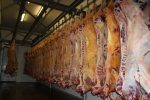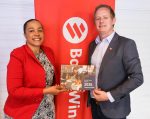Research experts Simonis Storm has said that inflation in electricity charges decelerated to 7.6% y/y in July 2024, a slowdown attributed to the government’s intervention, which cancelled the usual electricity rate hike that typically occurs in July.
The Namibian government has allocated approximately N$365 million to subsidise electricity costs for the 2024/2025 financial year, effective from 1st July 2024 to 30th June 2025.
“This subsidy is intended to provide significant relief to electricity consumers,” Simonis Storm said.
Holistically, the annual inflation rate in July 2024 remained steady at 4.6% y/y, consistent with the rate observed in June 2024 but slightly higher than the 4.5% y/y recorded in July 2023.
“This stability highlights the ongoing influence of key sectors—namely transport, housing and utilities, and food and non-alcoholic beverages—which continue to drive inflationary pressures within the economy.”
On a month-to-month basis, inflation rose by 0.2% in July, a shift from the deflationary rate of -0.2% experienced in June. Core inflation, a measure that excludes more volatile items and provides a clearer view of underlying inflation trends, inched up to 3.9% y/y in July from 3.8% y/y in the prior month. Although this is a slight increase, it represents a deceleration compared to the 4.3% y/y seen in July 2023.
“This change is largely attributable to a mild rise in food inflation, suggesting that certain components of the consumer basket are exerting less pressure than in the previous year. Goods inflation continues to be the predominant force behind overall inflation, registering at 5.3% y/y in July 2024. However, this figure reflects a slowdown from both the preceding month and the same period last year, indicating a moderation in price increases for goods. In contrast, service inflation is beginning to gain traction, rising to 3.4% y/y in July 2024 from 2.9% y/y in June and 3.1% y/y in July 2023. This uptick in service inflation suggests a shift in the inflationary landscape, where services are starting to play a role in contributing to overall price increases,” Simonis Storm said.
When observing zonal inflation in Namibia for July 2024, Zone 1 (Northern regions) and Zone 2 (Khomas region) reported inflation rates of 4.6% y/y and 5.0% y/y, respectively. In contrast, Zone 3 (encompassing Hardap, Karas, Omaheke, and Erongo regions) recorded a lower inflation rate of 3.8% y/y, below the national headline inflation rate.
In July 2024, the housing, water, electricity, gas, and other fuels category, which holds the largest weight in Namibia’s inflation basket, recorded an inflation rate of 4.1% y/y, marking its highest level since January 2024. This increase was primarily driven by higher rental payments for dwellings.
The food and non-alcoholic beverages category saw an annual inflation rate of 4.8% y/y, up from 4.3% y/y in June 2024 but slower than the 10.5% y/y recorded in July 2023. Within this category, bread and cereals increased by 2.5% year/year, meat by 3.8% year/year, milk, cheese, and eggs by 5.9% year/year, fish by 3.0% year/year, and vegetables by 4.6% year/year. Although these items have experienced price increases, the rates are slower compared to a year ago, likely due to improved supply conditions and reduced external shocks that previously drove up prices. On the non-alcoholic beverages front, coffee, tea, and cocoa saw an inflation rate of 15.1% y/y in July 2024.
The alcoholic beverages and tobacco category, which was the fourth largest contributor to July 2024’s headline inflation rate of 4.6% y/y, recorded an inflation rate of 4.9% y/y. This represents a deceleration from the 6.9% y/y observed in July 2023 and marks the third consecutive month of slowing inflation within this category.
“The primary driver behind this slowdown was the alcoholic beverages subcategory, particularly in items such as white spirits, whiskies, sparkling wines, champagnes, and beer/ales/ciders. In contrast, the tobacco subcategory experienced an uptick in inflation, rising to 6.4% y/y from 3.5% y/y in the previous year, driven largely by price increases in pipe tobacco. The remaining categories collectively contributed 0.9 percentage points to the overall headline inflation, with each category contributing between 0.0 and 0.2 percentage points. This highlights the varied but modest impact of these categories on the overall inflation rate.”
The transport category, which holds the third-largest weight in Namibia’s inflation basket, recorded an inflation rate of 6.7% y/y in July 2024. This reflects a deceleration from the 8.3% y/y observed in June 2024 yet remains significantly higher compared to the deflationary rate of -2.5% y/y in July 2023. The continued inflationary pressure in this category is primarily driven by the costs associated with operating personal transport equipment, particularly the prices of diesel and petrol.
On an annual basis, petrol and diesel inflation surged to 12.5% y/y in July 2024, a stark contrast to the -13.1% y/y recorded in July 2023. However, this marks a deceleration from the 16.0% y/y observed in June 2024. The slowdown is largely attributable to a reduction in fuel prices announced by the Ministry of Mines and Energy during July 2024. Specifically, petrol prices were reduced by 80 cents per litre, diesel 50 ppm by 60 cents per litre, and diesel 10 ppm by 70 cents per litre.
Additionally, in July 2024, both the Baltic Dirty Tanker Index (BDTI) and the Baltic Clean Tanker Index (BCTI)—which monitor the costs of shipping crude oil and refined petroleum products, respectively—recorded a reduction in shipping costs (Figure 4). Despite the ongoing geopolitical tensions and associated market volatility, oil prices remained relatively stable, with Brent crude averaging around ZAR 1,468 per barrel (USD 80.72) by the end of the month under review.










